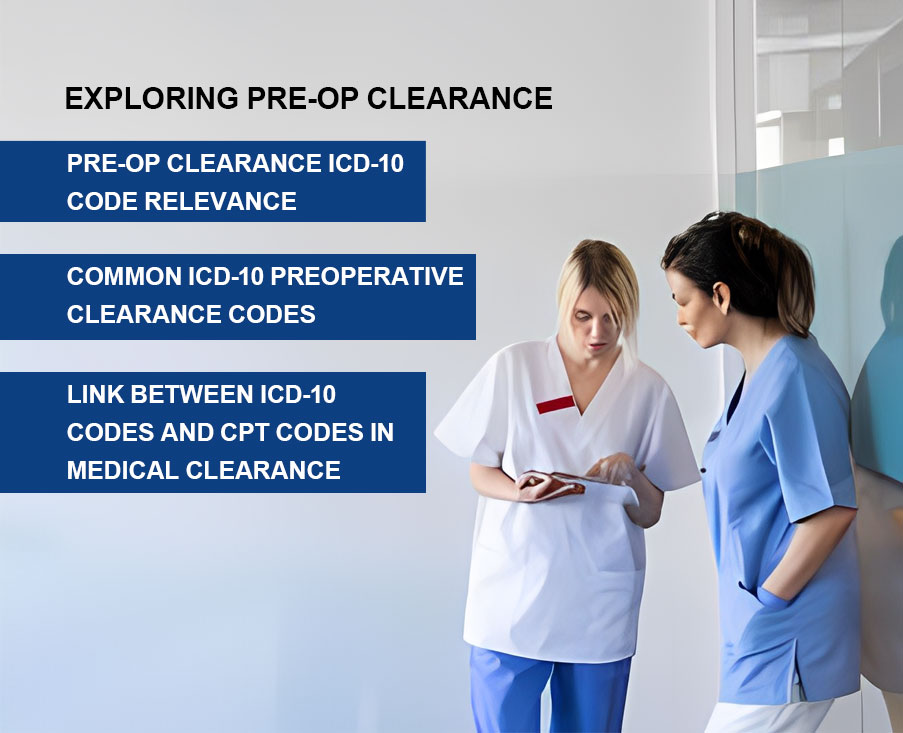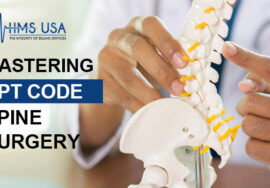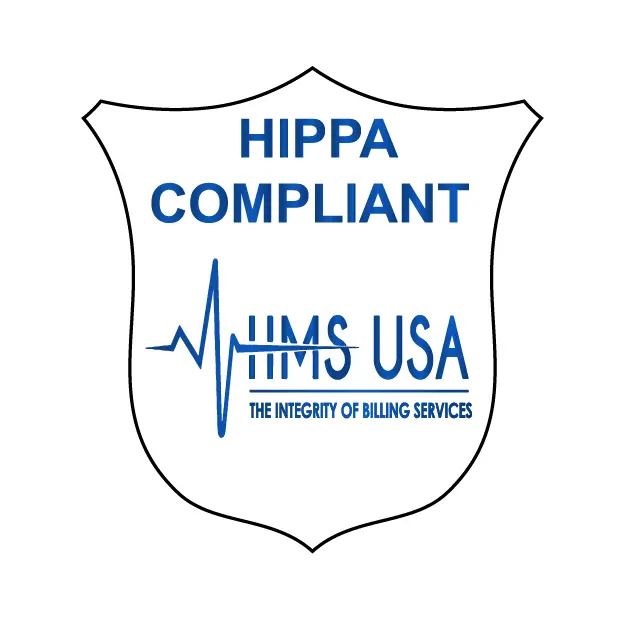
Making Pre-Surgery Evaluation Accurate with Medical Clearance CPT Codes
Health and qualifying tests must be done before surgery can be scheduled. This needs medical approval, which includes a health assessment and an assessment of whether the procedure is suitable. It’s like your doctor giving the all-clear after looking at your medical history, present health, medications, and other things that could affect the safety and success of the surgery. Getting doctor approval medical clearance CPT code makes sure that your doctor records and sends information about your surgery correctly.
Why is this step so important? There is a need for safety and less danger. By getting medical clearance, doctors can find and fix underlying health problems that could make surgery more difficult. It lowers the risk of surgical infections and heart problems and improves outcomes. It’s like putting on a safety harness before going on a dangerous journey.
Let’s discuss those mysterious CPT codes. Your healthcare provider utilizes seemingly random numbers to characterize and report medical services. They’re not just gibberish—they’re essential for accurate patient and insurance company communication. During pre-surgery exams, doctors utilize CPT codes to explain their findings. For correct reporting and reimbursement, medical clearance requires the right CPT codes.
Medical clearance isn’t just a formality—it’s essential to your safety and surgery’s success. What about CPT codes? They’re the hidden language that keeps things running smoothly.
Understanding Medical Clearance CPT Codes
Alphanumeric CPT codes let healthcare providers report and bill procedures, treatments, and evaluations. The AMA updates these codes, which healthcare providers, insurers, and government agencies use for coding and reimbursement.
Medical clearance CPT codes document and transmit pre-surgery evaluation services. These codes allow healthcare providers to communicate medical clearance assessment components such as history taking, physical examination, laboratory tests, and other pertinent evaluations. CPT codes enable transparency and consistency in reporting, easing communication between healthcare providers, insurers, and other patient care partners.
Significance of Accurate Coding in Healthcare Reimbursement
Accurate coding is paramount for healthcare reimbursement, as it directly impacts the financial viability of healthcare organizations and the affordability of healthcare services for patients.
Proper documentation and coding of medical clearance procedures using CPT codes are essential for ensuring that healthcare providers receive appropriate reimbursement for the services rendered.
Additionally, accurate coding helps to minimize the risk of claim denials, medical billing errors, and compliance issues, thereby safeguarding the financial integrity and reputation of healthcare providers.
Medical Clearance CPT code for Surgery
The CPT code system lists medical codes used to report medical, surgical, and diagnostic procedures and services performed by healthcare practitioners. CPT codes, developed and maintained by the American Medical Association (AMA), enable accurate patient reporting, billing, and reimbursement.
Medical Clearance Before Surgery CPT Code
Exploring Pre-Op Clearance ICD-10 Codes

The International Classification of Diseases, Tenth Revision (ICD-10) codes diseases, ailments, and other health issues. Healthcare providers use ICD-10 numbers to describe diagnoses for billing, research, and public health surveillance.
Pre-Op Clearance ICD-10 Code Relevance
Pre-operative clearance relies on ICD-10 codes to document and code the patient’s medical problems, comorbidities, and other health considerations. These codes aid medical clearance and help doctors estimate the patient’s health and surgical risk. ICD-10 codes help healthcare providers plan and manage perioperative treatment to improve surgical outcomes by accurately identifying pre-existing disorders.
Common ICD-10 Preoperative Clearance Codes
Pre-operative clearance uses ICD-10 codes for chronic medical problems such hypertension (I10), diabetes (E11), coronary artery disease (I25), and obesity (E66). These codes provide detailed diagnostic information about the patient’s health and enable healthcare providers to detect and treat potential surgical risk factors.
Link Between ICD-10 Codes and CPT Codes in Medical Clearance
ICD-10 and CPT codes work together to document and code patients’ health and healthcare providers’ services in medical clearance. ICD-10 numbers represent the patient’s underlying diagnoses and medical conditions that may affect medical clearance, while CPT codes describe evaluation and management services. These codes provide a complete picture of the patient’s health, aid healthcare practitioners incorrect documentation and communication, and support optimal patient care before, during, and after surgery.
Impact of Incorrect Coding on Patient Care
Medical clearance coding errors can harm patients. Misinterpretation of the patient’s condition, improper treatment decisions, or inadequate surgical preparation may result. If a patient’s medical conditions are incorrectly categorized, healthcare providers may ignore risk factors during clearance, resulting in surgery complications or unfavorable outcomes. Accurate coding ensures patients receive prompt, personalized health treatment.
Reimbursement Effects on Healthcare Providers
Healthcare providers need accurate coding to get paid quickly and fairly. Incorrect or inadequate coding can lead to claim denials, delayed payments, or underpayment for medical services, straining healthcare organizations financially and affecting their quality of care.
Medical clearance procedures should be properly documented and coded to ensure that healthcare professionals are fairly compensated, ensuring sustainability and patient access.
Strategies for Ensuring Accurate Coding
Healthcare professionals can use several methods to assure medical clearance coding accuracy:
- Train healthcare professionals and coding staff on medical clearance coding guidelines, documentation requirements, and best practices.
- Establish systems and processes to document patient histories, physical exams, and medical decisions.
- Audit and review coding methods to identify areas for improvement, correct errors, and verify compliance with coding norms and regulations.
- Use EHR systems and coding software with built-in coding prompts and validation checks to streamline, eliminate errors, and increase coding accuracy.
- Encourage healthcare practitioners, coding personnel, and billing departments to collaborate to clarify coding guidelines, address coding concerns, and match clinical documentation and coding procedures.
These practices help healthcare practitioners improve coding accuracy, reimbursement, and patient care during medical clearance.
Read More: 13 Most Common Medical Billing Errors and How to Avoid and Fix Them
Conclusion
This blog post explored how medical clearance CPT codes influences patient care, healthcare provider reimbursement, and coding accuracy. Medical clearance documentation and coding must be precise to protect patient safety and healthcare organizations’ finances.
To document, discuss, and classify patient evaluation and clearance before surgery, healthcare workers must know CPT and ICD-10 codes. Accurate reporting, invoicing, and reimbursement for medical services provide comprehensive patient care and financial sustainability in healthcare delivery employing these coding systems.
Future healthcare technology, regulatory changes, and reimbursement structures may affect medical clearance coding. Healthcare providers must monitor these developments and adjust their coding techniques to maintain compliance, optimize reimbursement, and meet medical clearance standards.
FAQs
Medical clearance confirms a patient’s health and eligibility for surgery by reviewing their medical history, current health, medications, and other factors that could affect treatment safety and success.
Surgery requires medical authorization to reduce risks and assure patient safety. It helps doctors identify and treat medical conditions that could cause complications during or after the treatment.
Medical clearance CPT codes describe and report medical procedures and services. Specific CPT codes are allocated for medical clearance to precisely reflect healthcare providers’ pre-surgery evaluation and assessment.
Medical clearance CPT codes facilitate precise documentation and communication between doctors, patients, and insurers. They explain evaluation services and assist with billing and payment.
Provide complete and accurate medical history, health state, and prescriptions to prepare for medical clearance. To ensure a complete evaluation, they should discuss any concerns or questions with their doctor.











